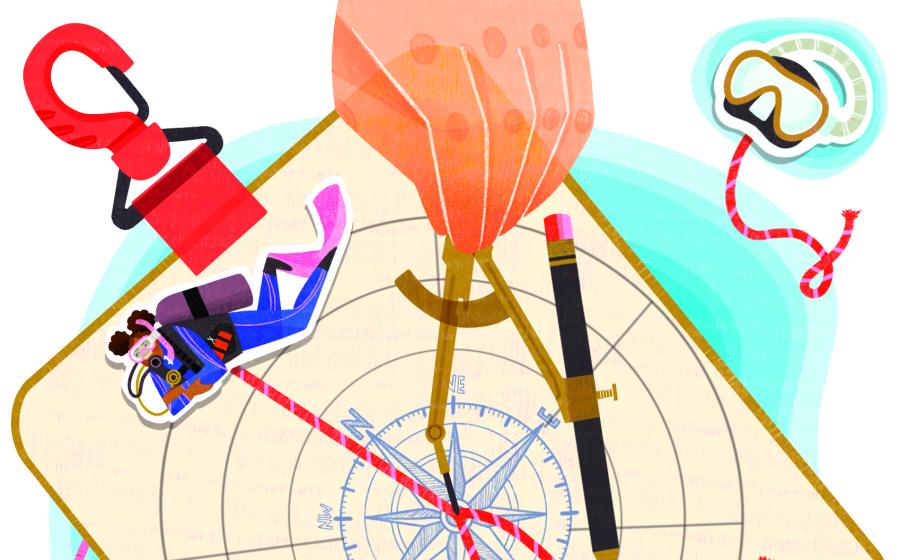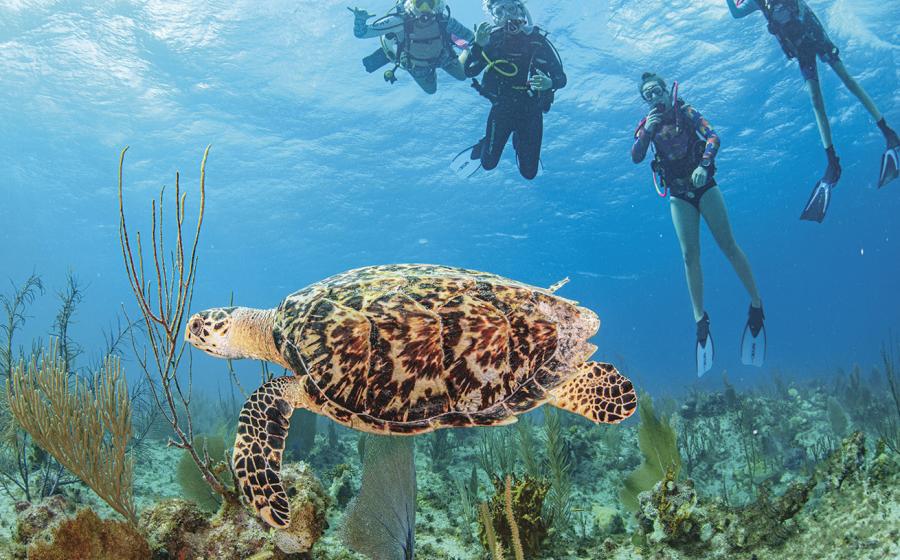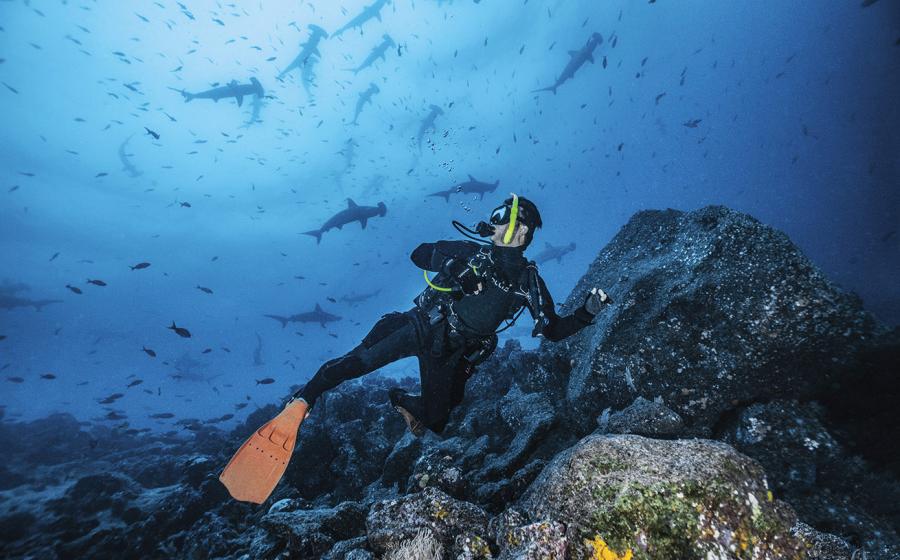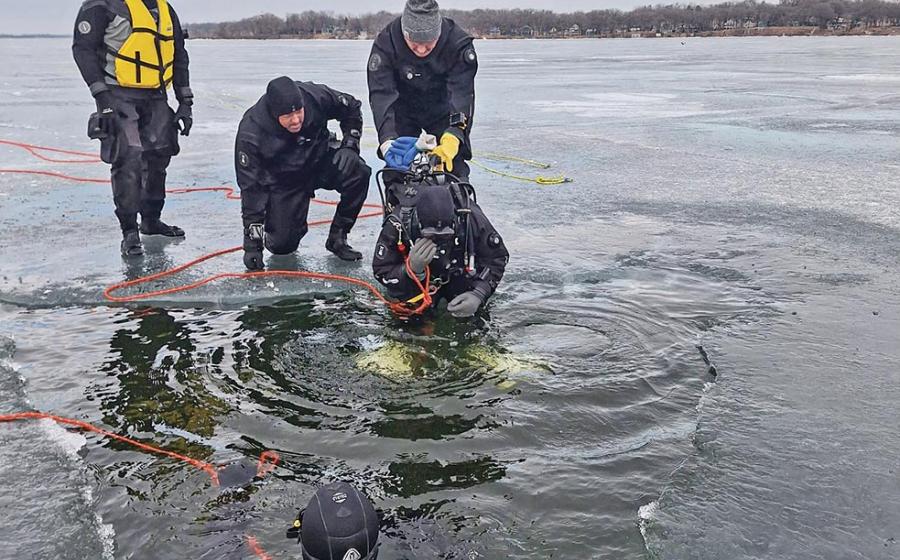Sport Diver Favorite Wrecks
FAVORITE WRECKS Sport Diver's Photographers' Favorite Wrecks
Franco Banfi The MT Haven super-tanker ship (formerly known as Amoco Milford Haven) sank in the waters between Varazze and Arenzano, in the Ligurian sea, on November 4, 1991, after an explosion and a fire, which killed six sailors. It was the biggest ecological catastrophe in European waters.
It is one of the biggest wrecks in Europe and the Mediterranean Sea: five decks, 334 meters (1.095 feet) in length, and its deepest point is 82 meters (269 feet) in depth! The super-tanker carried a crew of 35 sailing under the flag of Cyprus.
Felipe Barrio The Fujikawa Maru in Truk has some special characteristics that make it very interesting for divers and photographers. First you have its historic value that makes us feel what the battle really was. On the other hand the high quantity of life makes it really attractive even for those divers that don't like wrecks. Most important is its interior. With the right preparation, divers can have an exciting experience inside visiting all the holds, the engine room and the wreck's different stories filled with tools and that mythical telephone at the deepest of the wreck. It is a genuine pleasure, not to mention the multiple photographic opportunities you will find in every moment.
Jonathan Bird My favorite wreck is not actually a single wreck but a small area about the size of a couple football fields that I refer to as the "Airplane Graveyard" in Kwajalein Atoll up in the north by the island of Roi-Namur. This is a place where the U.S. military discarded dozens of dead airplanes at the end of WWII. There are Dauntlesses, B-25s, Corsairs, Avengers and a C-46 cargo plane all within a relatively small area. It is probably the world's most complete collection of WWII aircraft in one place!
Tanya Burnett The USS Liberty near Bali, Indonesia, is a truly unique wreck environment, with so much variety of life and conditions that no two dives are ever alike. Discoveries run from the tiniest pygmy sea horses to schooling jacks, bump head parrotfish and even the occasional mola mola!
David Fleetham My favorite wreck is the Fujikawa Maru in Truk Lagoon. I am more of a reef person than a wreck enthusiast, but the soft coral encrusted Fujikawa is the best of both worlds and it is at the perfect depth for a nice long dive.
Eric Hanauer At a length of 880 feet and 140 feet of vertical relief, the US aircraft carrier Saratoga in the Bikini Atoll is bigger than the Titanic. In a typical week at Bikini Atoll you'll make six dives on her, ranging from the navigation bridge to the combat information center, but will have barely scratched the surface. With her heroic war record, and her story of sinking during the atomic bomb tests of Operation Crossroads, you are touching the face of history.
Bill Harrigan My favorite wreck is the USCG Cutter Duane off Key Largo. This is a great shipwreck: upright, intact and covered in orange tube coral. It's always packed with big fish and it's close to home, too! Second on my list is RMS Rhone in the British Virgin Islands. The Rhone has amazing color, drama and history, and its shallow depth (70 ft max) makes it easily accessible. Number three is the B-17 Blackjack in Papua-New Guinea. This one is deep (150 feet), but when you hear the story and see the plane, it's worth the planning and effort.
Rod Klein I really like the MV Captain Keith Tibbetts on Grand Cayman because it's easy to dive, always promises great viz and has a great bow sitting in the white sand.
Steve Simonsen I like the grain wreck south of the runway on St. Thomas because it's difficult to find and it's relatively deep (115 feet). It's alive with big animals. It's wild and adored with crusty corals and funky sponges. It's a well-established wreck and rumor is the navy used it as a site for extreme free diving practice. I've only visited it less than a half dozen times.
Tim Rock This Republic of the Marshall Islands atoll is so remote that I am happy to just be in the water there. But exploring the Jaluit schooner wreck, sunk in the 1800s with its ballast stones still intact, was a real thrill for me. It was found by accident on an exploratory dive and is apparently from the days when Jaluit was a bustling trading post. Sitting in 100 feet of water, the ribs of the ship are still intact and marine life like eagle rays hover near it. You can see the holes for the masts and you just have to wonder what life aboard a ship like this was like over a century ago when its sails were full and it was plying the Pacific seas.
I also like the WWII Japanese shipwreck Shinkoko Maru,which fascinated me when I first explored it in 1982 and it continues to do so today. It's everything a shipwreck should be. It has interior access so you can explore the gaping engine room, old clinic and tidy galley. It is in a current area where rich soft corals and colorful sea anemones feed and cover the ship's outer structure. Sharks, dogtooth tuna, eagle rays, barracuda schools and lots of smaller marine fishes make the water column off the ship full of life. The amazing soft coral and lagoon phosphorescence create one of the world's most colorful night dives. It's just deep enough to be good but not so deep so all levels of diver can enjoy it. It's just a great dive.
Carlos Villoch My favorite wreck is the Carnatic, in the Red Sea. The excellent visibility in the area allows divers to see the whole wreck and the colorful soft corals that cover the hull make a beautiful combination with the blue water in the background. It's possible to make an easy penetration with plenty of ambient light, which makes for an easy and relaxing dive.
Franklin J Viola SS Yongala may have more species of exotic marine life per square foot than any other wreck or reef in the world. Many traveled divers say the SS Yongala is the best dive in the world. Michele Westmorland My favorite wrecks are in the Solomon Islands: the Bonegi I and II, a.k.a. the Hirokawa Maru and Kinugawa Maru. These Japanese freighters are very close to shore and make an excellent beach dive especially Bonegi II. Sixteen kilometers (10 miles) from Honiara, the easy access makes each site a must do. The Bonegi II is in shallow water. Although the bow is broken up, the basic structure of the ship makes for an incredible artificial reef. It is covered with beautiful soft corals and sea fans. What impressed me were the thousands of schooling fish that hovered just above the structure.
Another beach accessible dive, the USS Liberty near Bali, Indonesia, is absolutely covered with incredible soft coral and schools of fish. The catch to diving this wreck from the beach is that you are not walking on soft sand, but small boulders. A little more challenging but rest assured that the very tiny Balinese women will guide and help carry your equipment.
Stuart Westmorland The Jake plane wreck and Teshio Maru are both located not far from the Palau Pacific Resort. The Jake plane illuminated with movie lights is an amazing sight. The fuselage and wings are still intact. The Teshio Maru has much to explore and has terrific soft corals lionfish and sea life on this picturesque freighter.
Clay Wiseman Shinkoku Maru shines amongst all the wrecks of Truk Lagoon, for that matter among wrecks worldwide, because with her bow deck and gun resting in only 50 feet of water she has become a lush reef covered with soft coral trees and pulsating with schools of colorful tropicals. By way of contrast, her stern (somewhat deeper), inner holds and dark interiors including the operating theater and engine room are rife with intact artifacts that remind us of the history and the war-time drama of WWII. Shinkoku is truly a flagship of sea-wrecks where history and natural history coincide bringing wonderment to all who dive her spectacular remains.






